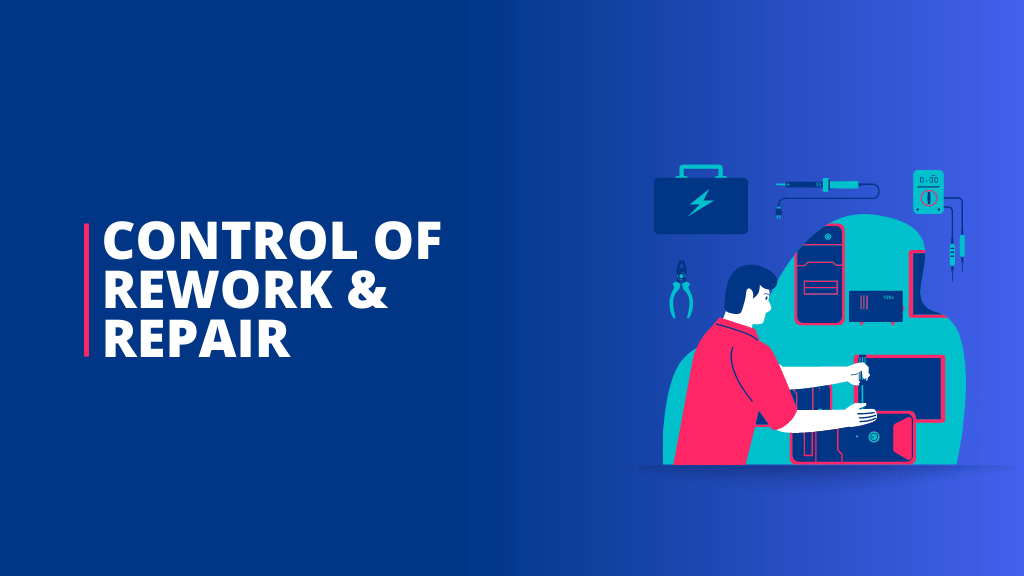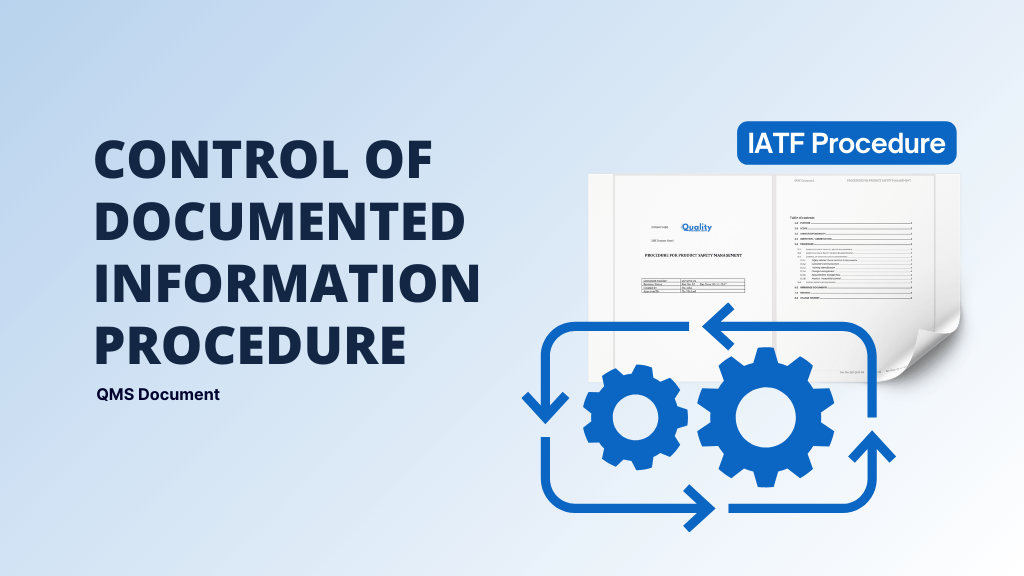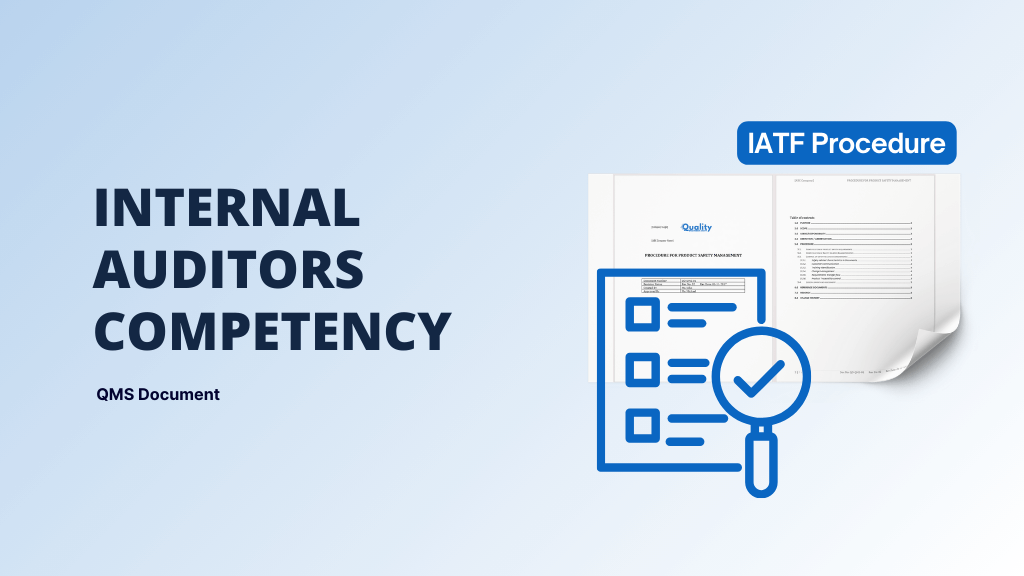Procedure for Managing Calibration/Verification records is among the mandatory procedure for every organization as per automotive QMS (Quality Management System) standard IATF 16949:2016.
We do the measurement to verify our product conformity. The measurement system are doing the measurement. Which includes instruments/gauge.
It is important that the gauge should be accurate and provide the consistent good measurement results.
Gauge/instrument are producing good results means there are no error. The error is identified using the method called calibration.
So it is always recommend to do the calibration for every gauge/instrument. And organization must have a documented procedure for how to manage the calibration/verification records within organization.
Let’s get understand and have a look into the calibration and verification procedure in detail.
What is Calibration/verification procedure?
Every procedure is well structure and documented with certain format and template. Refer below the table of content of the procedure.
IATF 16949:2016 QMS requirement stated in clause 7.1.5.2.1 Calibration/verification records as follows,
The organization must have a documented procedure for managing calibration or verification records.
Those gauges, measuring equipment‘s includes the equipment of employee, equipment of customer or equipment of supplier used for on-site verification of product.

Procedure for Managing Calibration/Verification records
1.0 Purpose:
The purpose of calibration/verification procedure is to define the system for all inspection, measuring and test equipment’s (Either of Employee or customer equipment or supplier equipment for measurement) should have calibration/verification done and are able to work consistently drive good results.
[It is the statement shows actual purpose of this procedure]
2.0 Scope:
Applicable for all gauges (inspection, measuring and test equipment) in an organization used to verify the conformity of all products with specification or requirements.
[It is the scope of our procedure]
3.0 Users or Responsibility:
HOD – Responsible for the procedure implementation.
SQA – Responsible for calibration and verification activities.
4.0 Definition / Abbreviation
Nil
5.0 Procedure:
Verification of instrument / equipment / gauges
- HOD (QA) is verify all gauges, that will use for inspection, measuring and testing purpose. This verification useful to check the conformity of the gauges to specified requirement before acceptance.
Storage
- Gauges (Instruments / Equipment’s / Jig’s and Fixtures) are kept safely to the dedicated defined storage space.
- All are stored at ambient environmental condition, if specified, always maintained.
Application and use
- Testing and inspection using accurate and verifiable equipment are necessary to verify and achieved good quality of product.
- Guage (Instruments / Equipment’s / Jig’s and Fixtures) are selected based on the usage and their capability, suitability and needed accuracy.
- Gauges (Instruments / Equipment’s / Jig’s and Fixtures) always use according to the work instructions / guidelines provided by manufacturers.
- It’s user’s responsibilities to use and manage gauges safe and properly.
Calibration/Validation
- SQA (Supplier Quality Assurance) Engineer is responsible for calibration/verification of gauges/instruments.
- Provide unique identification number to all gauges/instruments. Create list of all of them.
- Gauges (Instruments / Equipment’s / Jig’s and Fixtures) listed defining their ID number, range, Least count, manufacture name, manufacturer serial number, and other if any.
- Gauges (Instruments / Equipment’s / Jig’s and Fixtures) are used to calibrate/validate with defined frequency. This will ensure and maintain the accuracy and reliability for continuous use case.
- Based on gauge type, use case frequency, criticality of characteristics/feature being measure and rate of wear defined the calibration/verification frequency.
- Third party external laboratory or internal inhouse do the calibration/Verification of gauges as per requirements and guidelines. External laboratory should be Government Accredited agency follows the national / International standards.
- External agency accredited by government body do the calibration and validation of all masters use for in-house calibration/verification purpose. It should not be used for normal inspection purpose and strictly maintained by the HOD (QA) as custodian.
- All gauges (Instruments / Equipment’s / Jig’s and Fixtures) identified by a suitable sticker or label on it, to show the calibration status with Calibration done and due date on it.
- Record of calibration/verification are need to maintain and verify by the SQA.
Maintenance
- HOD (QA) is responsible for all instrument/equipment/jig/fixtures use in organization.
- Provide gage status as appropriate marking with sticker on all out of working gauge.
- Re-calibration is mandatory after maintenance and/or repair of not working, damage gauge.
- Record of maintenance, calibration and repair maintain as the history card for respective gauge (instrument/ equipment / jig / fixture).
- Whenever inspection and measurement equipment found out of calibration, then those instrument/gauge/equipment undergone through review to verify inspection and test done by that. In case of shipment of such product to customer, prior customer communication are necessary.
6.0 Reference documents
- IATF 16949:2016 Standard
- ISO 9001:2015
- Change Management Procedure
- Training Procedure
7.0 Records
| F-QA-XX | Gauge Calibration Plan |
| F-QA-XX | Gauge/Instrument History Card |
| F-QA-XX | Instrument Daily Check sheet |
8.0 Change History
| Rev. No. | Rev. Date | Description | Done By | Approved by |
| 00 | XX.XX.XXXX | Calibration/verification Procedure released | Mr. John | Mr. Michael |
Procedure as per clause 7.1.5.2.1 for Managing Calibration/Verification records template download


I am a full time Engineer and Quality Professional with over 11+ years of experience in the automotive industry. My professional journey has started from a small enterprise quality inspector to a advanced quality expert. I am creating a good-quality content for engineers. Help them to grow in their career.Learn more here.






